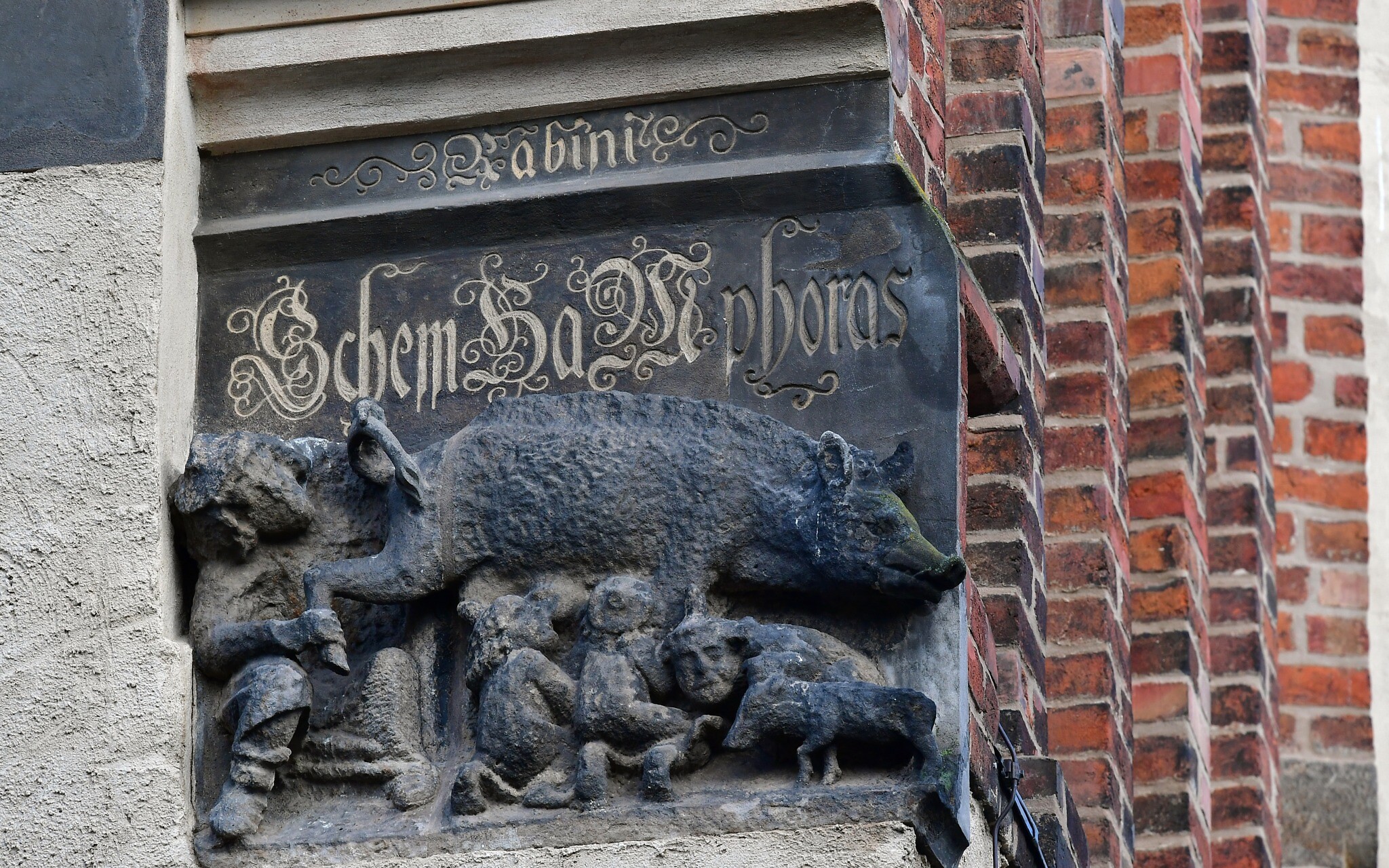There are several towns named Wittenberg in the US, but there is only one in Germany. Growing up in West Germany I didn’t hear much about it because Wittenberg was in the East, on the other side of the Iron Curtain. We learned at school that Martin Luther taught there and kicked off the Protestant Reformation. However, that he personally nailed his 95 theses to a church door in Wittenberg—as the story goes—is just as likely as Walt Disney having drawn the first Mickey Mouse draft himself. After the Berlin Wall and the Iron Curtain went away in 1989, Wittenberg awoke from its Dornröschenschlaf (Sleeping Beauty slumber), dusted itself off and emerged as a major tourist destination. Today it is the city with the highest density of UNESCO World Heritage sites, four in total and all connected to Luther’s life and the Reformation—must-visits in a Mecca for evangelical globetrotters. One of those sites received a lot of press coverage earlier this month that once again exposed the ugly underbelly of Luther’s teachings and the callousness of Germany’s highest court.

The medieval Judensau sculpture placed on one of Wittenberg’s churches shows people identifiable as Jews suckling from a pig’s teats and a rabbi peering into its anus. It’s not the only antisemitic carving from ancient times still visible on German churches, but the importance of the Wittenberg relief lies in its direct ties to Luther. An inscription that was added to the sculpture in the 16th century quotes from one of several anti-Jewish tracts by Luther—which today sound like blueprints for Kristallnacht, the 1938 November pogroms in Nazi Germany. No wonder the Nazis had a sweet spot for the great reformer and even displayed Luther’s notorious pamphlet “On the Jews and Their Lies” during their Nuremberg rallies.
In response to a call by a local Jewish man to remove the sculpture, Germany’s federal court of justice agreed that the sculpture is deeply offensive and “antisemitism carved in stone,” but denied his call for removal since the existing memorial and information board enabled “clarification” to help “counter exclusion, hatred and defamation.” So far, so good. One could argue that the inside of a public museum provides a better space for contextualization than the outside wall of a Christian church, but even there, one would think, placing explanations on an information board might put things in perspective. When I first read the supposedly clarifying text, however, I couldn’t help but feel that sometime in the 1930s a spaceship must have landed in Germany, with Nazi aliens who brought the country and its well-meaning people under control (im nationalsozialistisch beherrschten Deutschland). Not exactly what you’d want tourists to read during their tour through Wittenberg, or would you? The memorial was installed in 1988 when East Germany was still under communist rule. Communists in the German Democratic Republic (GDR) felt they had nothing to be sorry for. In their view, all the Nazis had fled to West Germany and East Germany was an enchanted garden full of righteous anti-fascists. Which, by the way, strikes me as an early version of the fairy tale Vladimir Putin likes to tell about the anti-Nazi mission of modern Russia. But I digress. The fact that the Wittenberg memorial dates from the late GDR might explain its weirdly detached language, which the court, as a compromise and for the sake of true “clarification,” could have asked to revise and make more explicit, but didn’t.
There are more unpleasant historical facts in and around Wittenberg that have been successfully kept under wraps for decades. It’s no surprise that the university in Wittenberg where Martin Luther taught is named after him. In the 1990s, when I had my first tenured appointment at Martin Luther University Halle-Wittenberg, I always assumed that it had carried his name for centuries. Later I learned that Luther didn’t become its namesake until November 1933—with the enthusiastic approval of Hermann Göring, Prussia’s freshly minted prime minister. That the second-highest ranking Nazi in the Third Reich acted, for obvious reasons, as the proud godfather at MLU’s christening wasn’t much talked about at the university. Scientists don’t like to publish negative results, but neither do Hallenser historians.
Wittenberg proudly presents itself to the outside world, online and in print, as Lutherstadt Wittenberg (Luther City) and Halle markets itself as Händelstadt because the Baroque composer Georg Friedrich Händel was born there. Although he left Halle at an early age and rose to fame in England, Halle makes enormous efforts to put the Händel brand on pretty much everything you can think of: music festivals, food, merchandise—you name it. Not even Salzburg does that with its very own Wolfgang Amadeus Mozart. One reason why Halle tries to numb your senses with the constant Händel bombardment may be to distract from its other (in)famous son: Reinhard Heydrich. In contrast to Händel, Heydrich was born into a well-to-do family from the upper echelons of Halle society, and, ironically, with equally high musical ambitions as the Händel family. Heydrich’s father owned and ran the local music conservatory and young Reinhard was supposed to become an opera singer. While the English Wikipedia entry for Halle (Saale) lists him under “notable people” as “Reinhard Heydrich (1904–1942), one of the leading Nazis in World War II and main architects of the Holocaust,” you don’t find him at all in the German version, which in fact looks like it was written by the Halle tourist bureau. Heydrich is mentioned on a separate, German-language-only Wikipedia page titled “Sons and daughters of Halle (Saale)” with all his fancy Nazi titles—without comment or reference to the Holocaust. Given its ruling on the Judensau, would Germany’s federal court of justice settle for that level of “clarification” too?
Henning Schroeder is a professor at the University of Minnesota and currently teaches in the Department of German, Nordic, Slavic & Dutch. His email address is schro601@umn.edu and his Twitter handle is @HenningSchroed1.

Comments